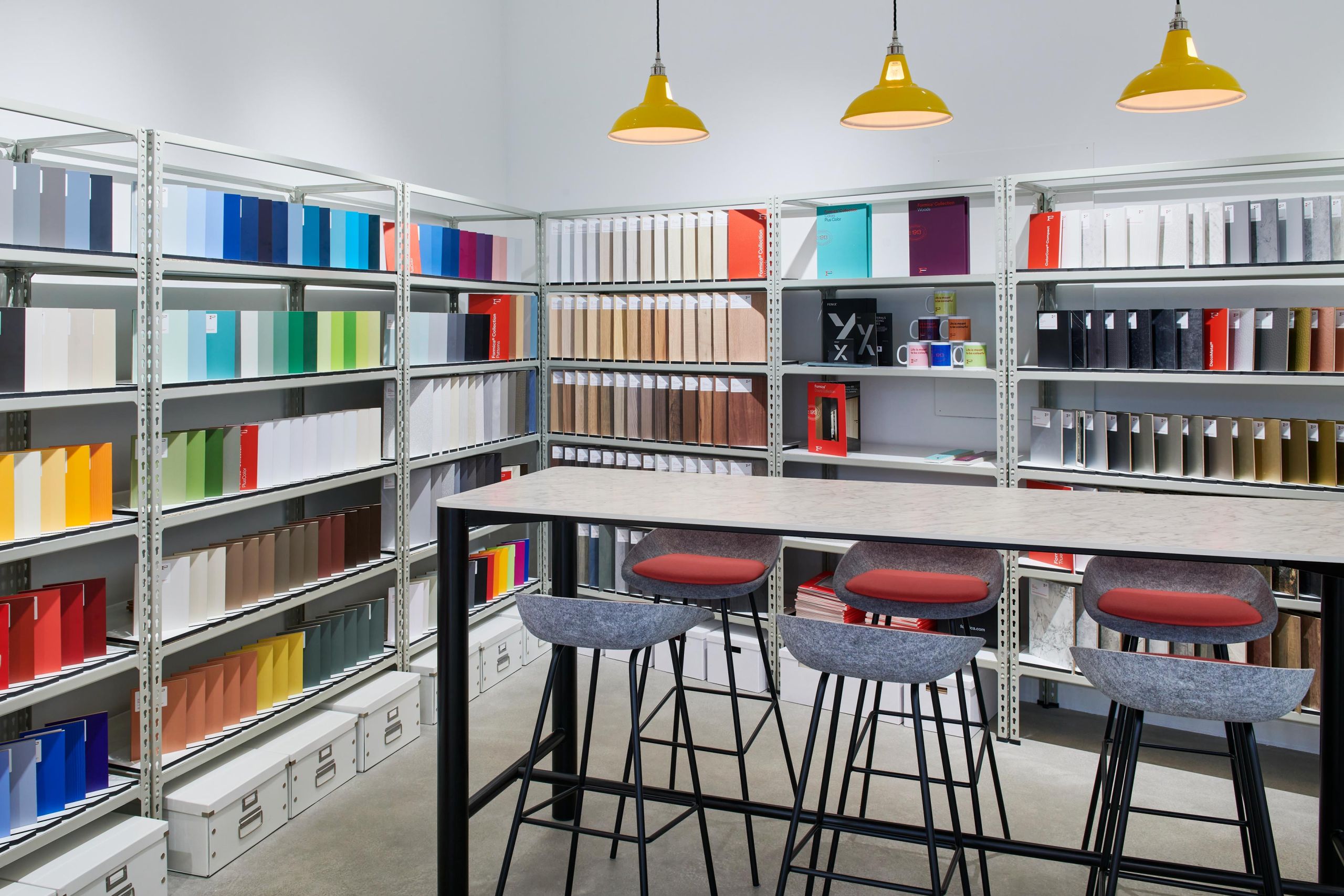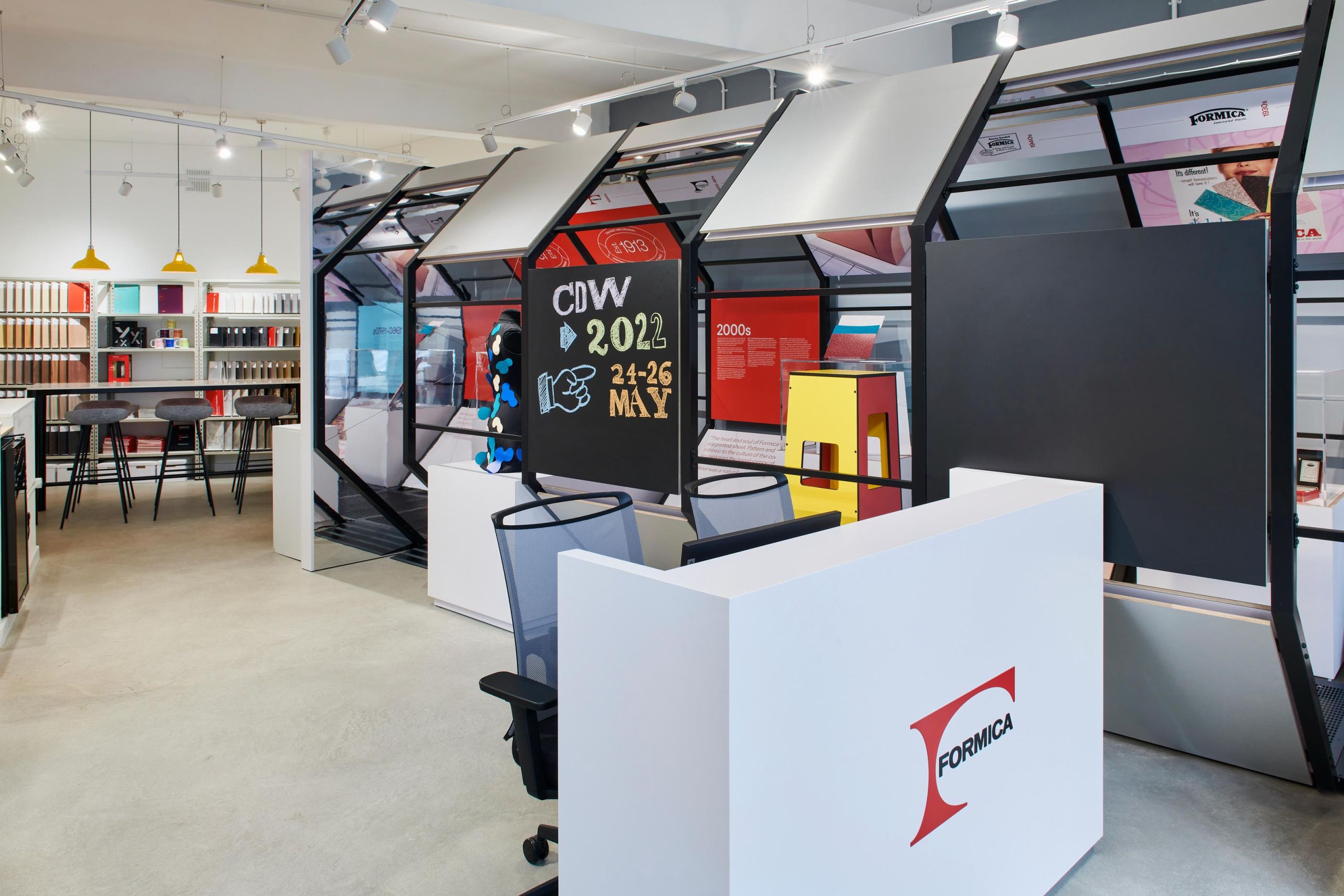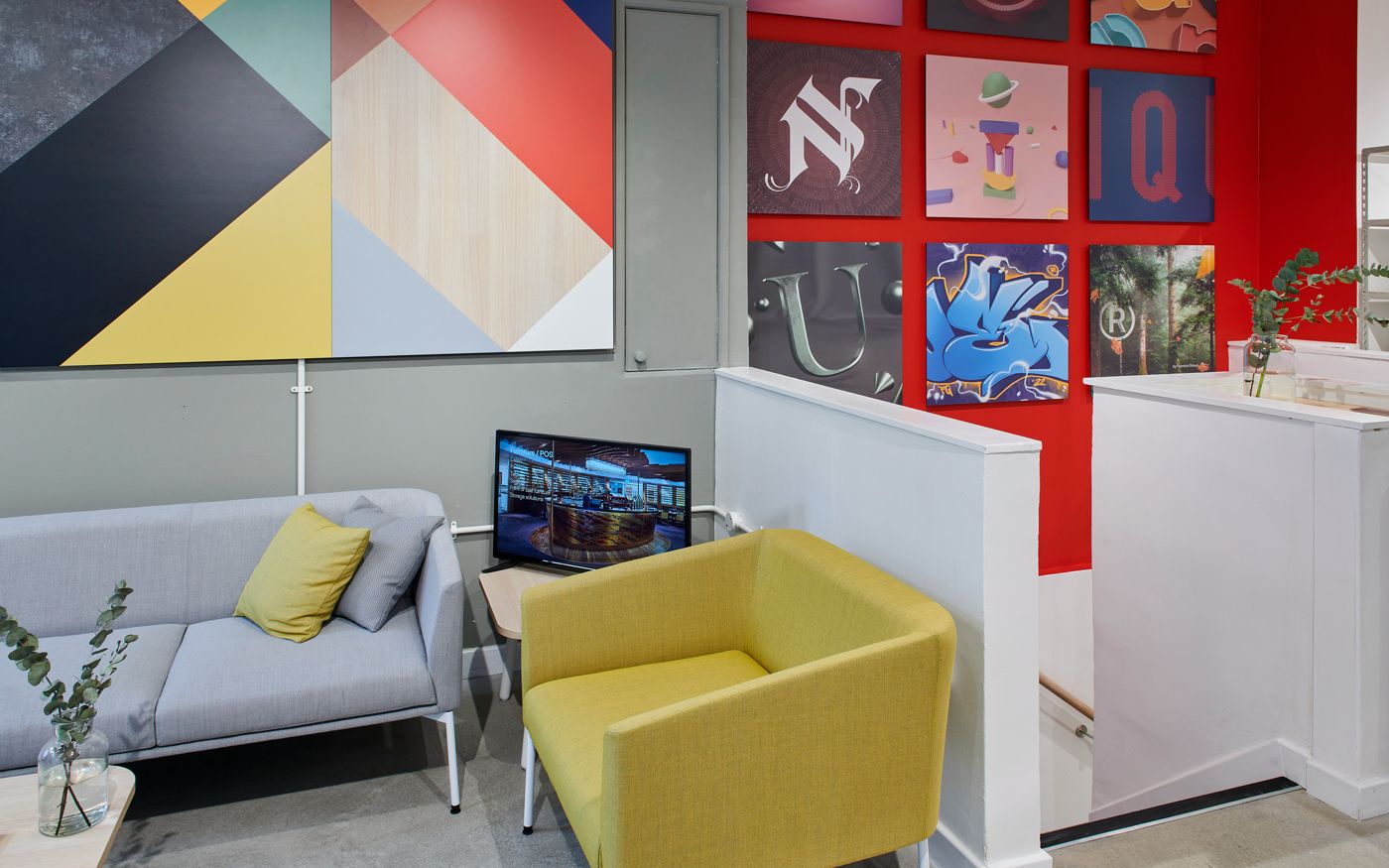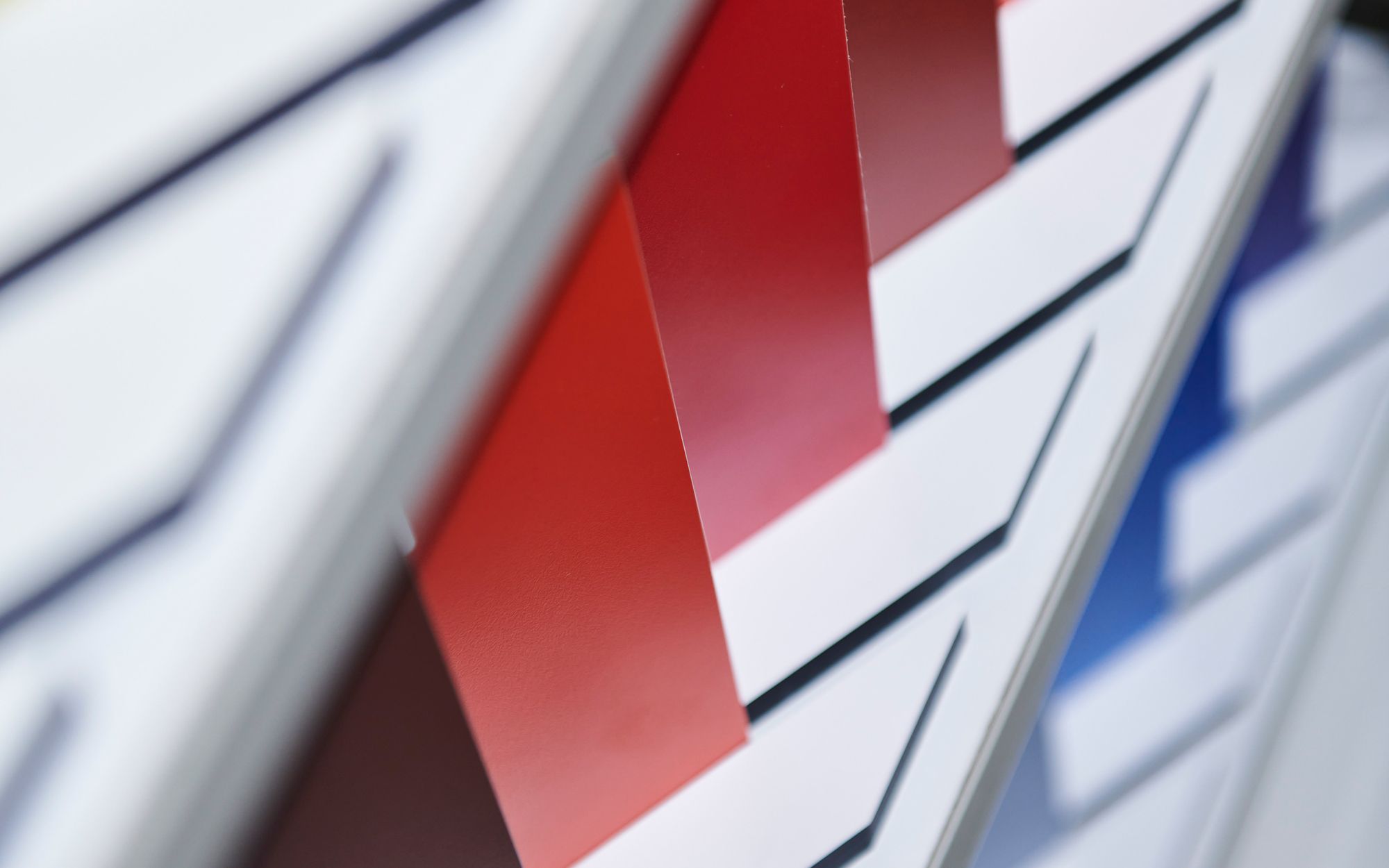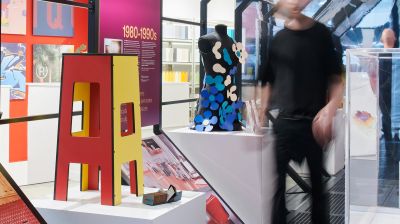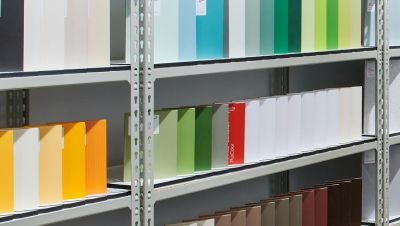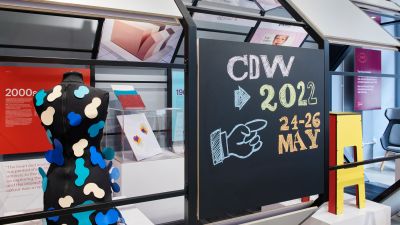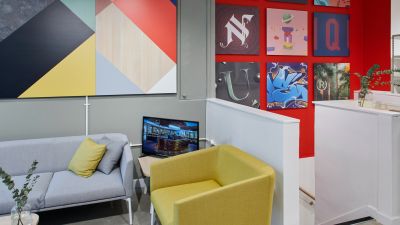Everyone knows Formica. The inventor of laminate has been the source of creative, colourful, wipe-clean surfaces since 1913. No other laminate has ever become a household name.
But familiarity can easily dull a designer to the unexpected possibilities of a material with the ability to transform a space or an object through colour, pattern, and texture. The task of the Formica pop-up showroom was to inspire a new generation of designers and specifiers through the quality, versatility, inventiveness, and sustainability of the Formica range.
The showroom in Clerkenwell, heart of London’s interior design community, covered two floors. The ground floor featured a simple welcome desk, a timeline of Formica design icons, and a practical design space containing a complete library of Formica colours. Upstairs was a series of rooms for meetings, private seminars, and product launches. Since the showroom was temporary, every aspect had to be easily dismantled for reuse elsewhere. Formica wanted a modular, adaptable, and portable structure in keeping with the brand’s sustainability values.
Our response was driven by Formica’s pre-eminent status in British pop culture. Through decades of changing fashions, Formica remained cool and modern. So we took inspiration for our timeline from another icon of cool modernity: the octagonal corridor on Discovery One, the Jupiter-bound spaceship in Stanley Kubrick’s 2001: A Space Odyssey.
Stepping into our octagonal tunnel felt just as momentous. It was a journey through time in which Formica was always the hero of the moment. Mirrored tunnel ends added a sci-fi touch of design ideas leading to infinity.
The adjacent creative space was pared back and practical: grey industrial racking that allowed the spectrum of Formica colours to shine like a beacon of possibility. The space was so inviting and so tactile, it was impossible to resist drawing out slabs of Formica to imagine how they might work together.
The Formica showroom is storytelling at its best. Visitors could see what other designers had done before them, then play with the materials themselves to imagine how far their own creativity could take Formica’s timeline of inventiveness.


